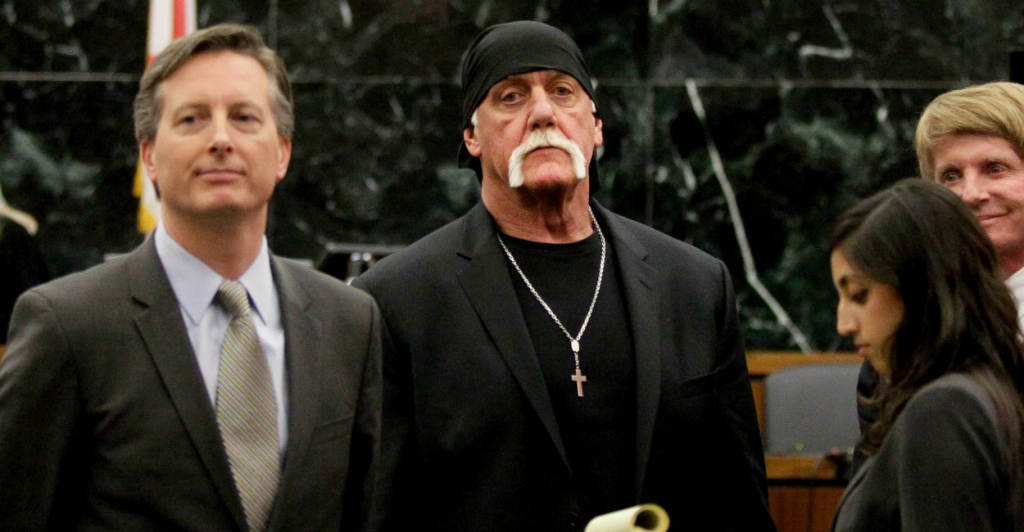Last week, Gawker Media filed for Chapter 11 bankruptcy, shortly after it lost a major $140 million lawsuit to Terry Bollea, who is better known by his wrestling persona, Hulk Hogan.
This type of bankruptcy doesn’t liquidate the company—rather, it restructures the company in an attempt to go forward unsaddled by debt. Some are already lamenting what they see as a loss for journalism. And, more widely, some are writing that the lawsuit, funded by billionaire Peter Thiel, highlights the influence of money in our court system, a potential problem that some on the left are now raising, and which was considered a problem in the common law.
The lawsuit against Gawker arose out of the publication of Hogan’s sex tape. The story is long and convoluted, but is at its heart a privacy lawsuit. However, Hogan did not have the money to engage in a long and risky lawsuit against a major media company, and it turns out that his legal bills were fronted by Thiel, co-founder of PayPal.
Gawker media “outed” Thiel in a 2007 story. Thiel has stated in an interview with The New York Times, “I saw Gawker pioneer a unique and incredibly damaging way of getting attention by bullying people even when there was no connection with the public interest.” He claims that his support for Hogan’s lawsuit against Gawker “[is] less about revenge and more about specific deterrence.” Thiel views the Hogan lawsuit as “one of my greater philanthropic things that I’ve done. I think of it in those terms.”
Thiel’s crusade against Gawker raises an interesting legal question: Is the funding of another’s lawsuit (lawsuit lending) a dangerous practice that will erode the free press?
Mark Joseph Stern of Slate has decried Thiel’s intentions as distasteful, but still considers lawsuit lending a necessary practice: “Impact litigation is built on third-party financing,” so for Stern, the Thiel situation constitutes, “the price we pay for free speech.”
In contrast, Justin Peters from Slate claims, “Thiel’s lawsuit-funding will have a chilling effect on journalists and journalism, not least by asserting the power of the richest and least accountable among us to define what constitutes acceptable discourse and to punish those who violate these arbitrary standards.
That’s something none of us should tolerate. Similarly, Will Oremus of Slate notes, “By doing it in secret, in the most heavy-handed way possible, and by means available only to the very wealthiest, [Thiel] has demonstrated that the impunity he and his cohorts enjoy by dint of their personal fortunes is both greater and more dangerous than anything Valleywag could write.”
Andrew Ross Sorkin, who originally broke the story of Thiel’s involvement to The New York Times, also sympathizes with Gawker. He affirms, “I believe in a free press, and that means freedom of speech for Gawker’s brand of journalism.”
In the same vein, Felix Salmon of Fusion argues, “Gawker’s future is indeed grim: it can’t afford to fight an indefinite number of lawsuits, since fighting even frivolous suits is an expensive game.” Further, Salmon observes, “If Thiel’s strategy works against Gawker, it could be used by any billionaire against any media organization.”
Jack Shafer of Politico describes the strategy of Thiel negatively as a kind of “legal ‘activism.’”
The widespread leftist sympathy for Gawker’s demise at the hands of Thiel is accompanied by fears that it will set a paradigm example for plutocracy.
According to Walter Olson of the Cato Institute, lawsuit lending was formerly illegal, according to common law standards, and remains illegal in many countries. The common law terms for what has been described in this article as “lawsuit lending” are “champerty” and “maintenance.” What differentiates the terms is that: “At common law, funding another’s lawsuit was ‘champerty’ if done for a share of the proceeds and ‘maintenance’ if done for the hell of it.”
The reasoning that Olson finds behind the previous illegality of both these practices is that they were “long perceived as a dangerous stirring up of social conflict that might otherwise have remained at rest.”
The “old ethical qualms” fell away with the advent of the 1950s “pro-litigation sentiment”—essentially “a means of holding powerful institutions accountable, ensuring wronged parties their day in court, and so forth.” Cases effecting this shift included the civil rights cases cited by Stern, which involved third-party funding on behalf of such institutions as the NAACP and the American Civil Liberties Union. Enabled by lawsuit lending, “The battle for marriage equality triumphed because millions of Americans were willing to help fund same-sex couples’ lawsuits against discriminatory states.”
But, it is not only liberals that find themselves resorting to these measures: “The campaign against Obamacare almost succeeded because conservative donors underwrote the plaintiffs’ suits,” according to Stern. In contrast to Stern’s embrace of the double-edged swords of champerty and maintenance, Olson argues that the change in the legality of champerty and maintenance that has occurred gradually and to different extents throughout the states is a “broader trend that has left many sectors of society more exposed to the dangers of litigation, with the press just the latest.”
Our civil justice system exists to quickly and cheaply adjudicate claims between private parties, and it is inevitable that some are able to afford better legal counsel or longer, more drawn-out legal strategies. But does this mean that they can “buy justice?” Hopefully not.
